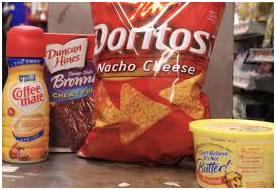Care for some chemicals in your food?
Many foods are laden with additives, flavorings and artificial colors that can cause allergic reactions, create mysterious symptoms or pose health risks for people.
Monosodium Glutamate, known as MSG, is one of the worst food additives around and is surprisingly used in many foods, including canned soups, crackers, meats, salad dressings, frozen dinners and much more. It’s found in restaurants, in your child’s school cafeteria, and, amazingly, even in some baby food and infant formulas.
Sensitivity to MSG can cause symptoms such as headaches, numbness, burning sensations, tingling, facial pressure or tightness, chest pain or difficulty breathing, rapid heartbeats, drowsiness, weakness, insomnia or a racy feeling.
Why is MSG so dangerous?
It is an excitotoxin, which means it overexcites your cells to the point of possible damage. It may cause brain damage to varying degrees, potentially triggering or worsening learning disabilities, Alzheimer’s disease, Parkinson’s disease, Lou Gehrig’s disease and more.
While it is required by the FDA that food manufacturers list the ingredient “monosodium glutamate” on food labels, they do not have to label ingredients that contain “free glutamic acid,” even though it’s the main component of MSG. So even though it says “no MSG,” there may be anyways.
Be a diligent label-reader. Here are some of the many names of MSG: hydrolyzed protein, textured protein, sodium caseinate, autolyzed yeast, glutamate, glutamic acid, calcium caseinate, yeast extract, yeast nutrient or yeast food.
Other ingredients often contain MSG or create MSG during processing: “Natural” flavors and flavorings, “natural” seasonings, soy sauce, soy protein isolate, stocks, broths, bouillon, malt extract and flavoring, corn starch, powdered milk or barley malt.
In general, if a food is processed you can assume it contains MSG (or one of its pseudo-ingredients). Take a look at a bag of flavored Doritos for example. Remember, you are what you eat. Create a healthy awareness of the foods you eat— you just might start to feel better!

